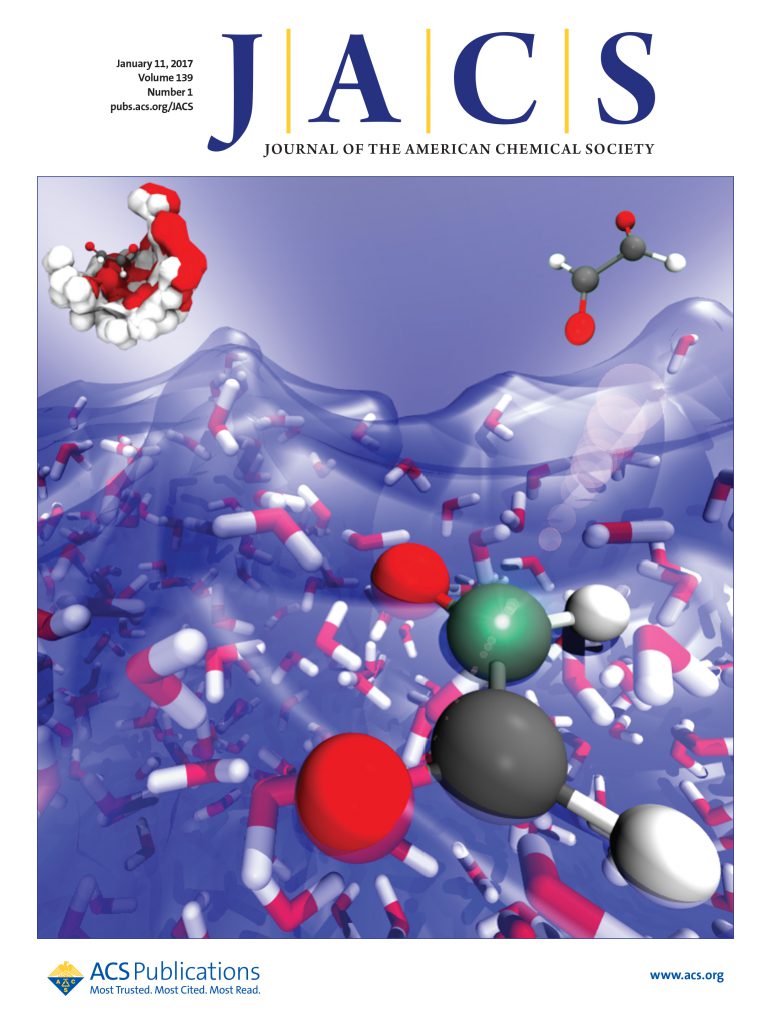Data-Driven Insight into the Universal Structure–Property Relationship of Catalysts in Lithium–Sulfur Batteries
IF 14.4
1区 化学
Q1 CHEMISTRY, MULTIDISCIPLINARY
引用次数: 0
Abstract
Despite tremendous efforts in catalyzing the sulfur reduction reaction (SRR) in high-capacity lithium–sulfur (Li–S) batteries, understanding the universal and quantitative structure–property relationships (UQSPRs) of SRR remains elusive. Such an unclarity results from the limitations of first-principle calculations in analyzing vast, high-dimensional, and heterogeneous data. Here, we present a collaborative data-driven model for heterogeneous catalytic knowledge fusion, detecting over 2,900 articles on SRR published between 2004 and 2024. By using sure independence screening and sparsifying operator, we surprisingly identified a composite descriptor, D, dominated by the dispersion factor. In contrast to the classical electronic state analysis framework, the dispersion factor directly established UQSPRs between atom topological arrangement and catalyst-polysulfide interaction intensity, accurately predicting the catalytic activity of over 800 types of catalysts. Combined with a volcano plot linking the overpotential to the interaction intensity, we determined the D value range of high catalytic activity, facilitating the discovery of tens of novel SRR catalysts from 374,833 candidates, many of which escaped previous human chemical intuition. As a representative, CrB2 demonstrated superior catalytic activity under high sulfur loadings of 12.0 mg cm–2 and low temperatures of −25 °C. Pouch cells with CrB2 achieved a gravimetric specific energy of 436 Wh kg–1 under a high sulfur content of 76.1% and lean-electrolyte conditions of 2.8 μL mg–1. Our data-driven method enables new opportunities to fundamentally identify UQSPRs using vast and heterogeneous data, suggesting the promise of revisiting under-exploited knowledge from the historical literature for novel catalyst discovery.

锂硫电池催化剂普遍结构-性能关系的数据驱动洞察
尽管在催化高容量锂硫电池的硫还原反应(SRR)方面做出了巨大的努力,但了解SRR的普遍和定量结构-性质关系(UQSPRs)仍然是难以捉摸的。这种不清晰是由于第一原理计算在分析大量、高维和异构数据时的局限性造成的。在这里,我们提出了一个异构催化知识融合的协作数据驱动模型,检测了2004年至2024年间发表的2900多篇SRR文章。通过使用独立筛选和稀疏算子,我们惊奇地发现了一个由色散因子主导的复合描述子D。与经典的电子态分析框架相比,分散因子直接建立了原子拓扑排列和催化剂-多硫化物相互作用强度之间的UQSPRs,准确预测了800多种催化剂的催化活性。结合将过电位与相互作用强度联系起来的火山图,我们确定了高催化活性的D值范围,促进了从374,833种候选物中发现数十种新型SRR催化剂,其中许多逃脱了人类以前的化学直觉。以CrB2为代表,在高硫负荷12.0 mg cm-2和低温- 25℃条件下表现出优异的催化活性。在高硫含量76.1%、稀电解质2.8 μL mg-1条件下,含CrB2的袋状电池的重量比能达到436 Wh kg-1。我们的数据驱动方法为使用大量异构数据从根本上识别UQSPRs提供了新的机会,这表明有希望重新审视历史文献中未充分利用的知识,以发现新的催化剂。
本文章由计算机程序翻译,如有差异,请以英文原文为准。
求助全文
约1分钟内获得全文
求助全文
来源期刊
CiteScore
24.40
自引率
6.00%
发文量
2398
审稿时长
1.6 months
期刊介绍:
The flagship journal of the American Chemical Society, known as the Journal of the American Chemical Society (JACS), has been a prestigious publication since its establishment in 1879. It holds a preeminent position in the field of chemistry and related interdisciplinary sciences. JACS is committed to disseminating cutting-edge research papers, covering a wide range of topics, and encompasses approximately 19,000 pages of Articles, Communications, and Perspectives annually. With a weekly publication frequency, JACS plays a vital role in advancing the field of chemistry by providing essential research.

 求助内容:
求助内容: 应助结果提醒方式:
应助结果提醒方式:


